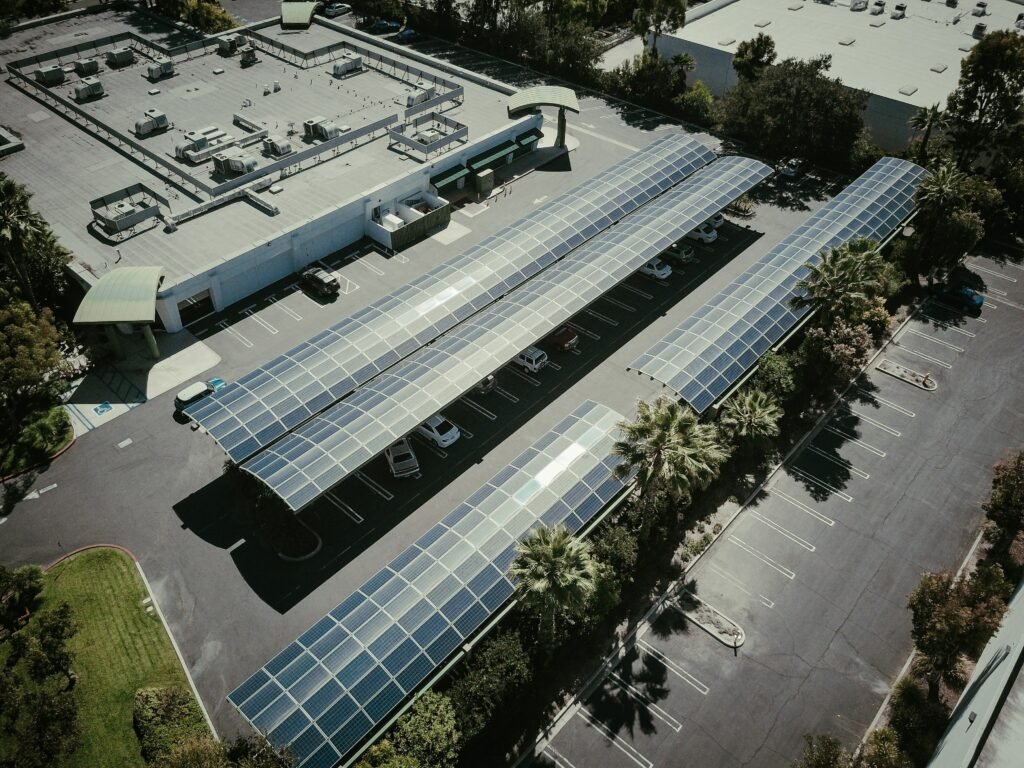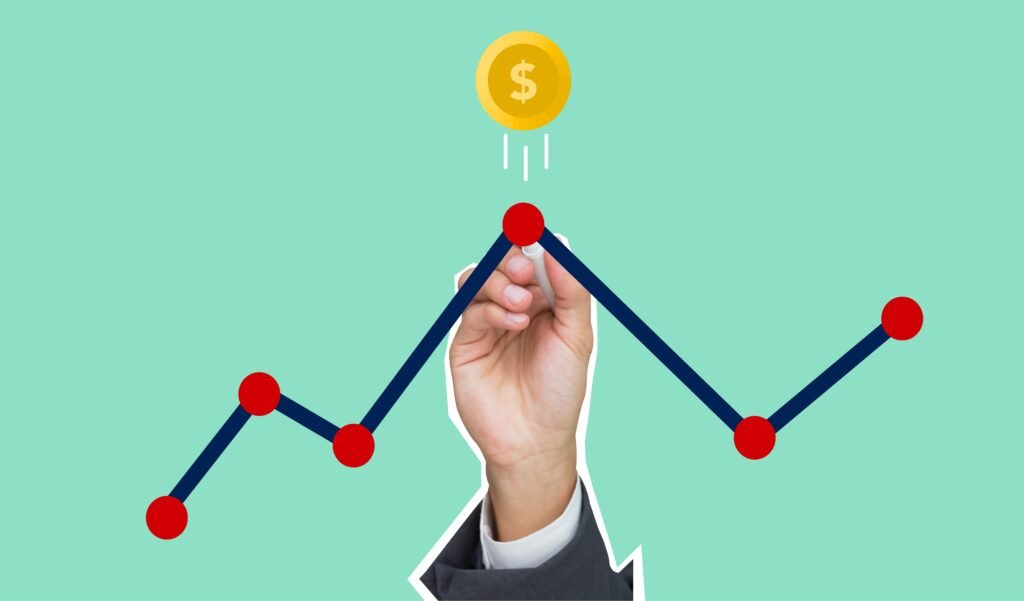In today’s fast-paced business world, it can be tempting to focus solely on short-term profitability. However, while this approach may yield immediate gains, it often comes at the expense of long-term sustainability. Balancing both short-term profitability and long-term sustainability is crucial for any successful business management strategy. In this blog post, we’ll explore what these terms mean, the benefits and challenges of balancing them, how to achieve balance between them and take a look at leading sustainable organizations like Hitachi. Let’s dive in!
Statistics on Balancing short-term profitability with long-term sustainability in business management
Balancing short-term profitability with long-term sustainability is a key challenge in business management. While short-term profitability focuses on immediate financial gains, long-term sustainability considers the economic, social, and environmental impacts of business activities over an extended period.
- ESG Performance: Environmental, Social, and Governance (ESG) metrics have become increasingly important for assessing a company’s sustainability practices. According to a study by MSCI, companies with strong ESG performance outperformed their counterparts with weaker performance over a long-term investment horizon.
- Consumer Preferences: Customers are increasingly prioritizing sustainable products and services. A 2020 survey by IBM found that 57% of consumers are willing to change their purchasing habits to help reduce negative environmental impact. Businesses that prioritize sustainability can tap into this growing market demand.
- Cost Savings: Implementing sustainable practices can lead to long-term cost savings. For example, a report by the Carbon Disclosure Project (CDP) revealed that companies that actively manage and reduce their carbon emissions achieved, on average, cost savings of $1.2 billion over five years.
- Investor Influence: Institutional investors are recognizing the importance of sustainability in long-term business performance. The Global Sustainable Investment Alliance reported that sustainable investments accounted for $30.7 trillion globally in 2018, a 34% increase from 2016. Investors are considering sustainability factors when making investment decisions, which can affect a company’s access to capital and overall profitability.
- Regulatory Environment: Governments worldwide are implementing stricter regulations on environmental and social aspects of business operations. Non-compliance with these regulations can result in financial penalties and reputational damage. Integrating sustainable practices into a business’s operations can mitigate regulatory risks.
- Employee Engagement and Retention: Businesses that prioritize sustainability often have higher levels of employee engagement and retention. A study by Cone Communications revealed that 64% of millennials won’t take a job if a potential employer doesn’t have strong corporate social responsibility (CSR) values. Engaged employees can contribute to long-term profitability through increased productivity and innovation.
What is short-term profitability?
Short-term profitability is a measure of how well a company is doing financially in the short-term, usually within the span of one year or less. It focuses on maximizing profits immediately, with little regard for long-term sustainability.
In order to achieve short-term profitability, companies often cut costs and focus on quick wins such as reducing employee benefits or delaying investments in research and development. This approach may lead to immediate financial gains but can result in negative consequences down the line.
Companies that prioritize only short-term profitability may experience decreased customer loyalty and brand reputation damage if they sacrifice quality for profit. Additionally, employees may become disengaged due to lack of investment in their development or compensation packages.
While short-term profitability is important for keeping a business running smoothly day-to-day, it should not be prioritized over long-term sustainability goals such as investing in sustainable technology or developing relationships with stakeholders who are aligned with your company’s values.
When making decisions, businesses should consider both the short-term and long-term consequences in order to ensure a strong financial future.
What is long-term sustainability?
Long-term sustainability refers to the ability of a business to maintain its operations and activities without compromising future generations’ ability to meet their own needs. It involves making decisions that prioritize social, economic, and environmental responsibility over short-term profits.
Sustainability requires businesses to consider the long-term impact of their activities on various stakeholders, including communities, employees, customers, suppliers, investors and the environment. This means developing strategies that promote resource efficiency, reduce waste and pollution while also contributing positively to society.
To achieve sustainability in business management requires companies to adopt innovative practices such as using renewable energy sources or reducing carbon emissions in production processes. Additionally, it entails investing in employee development programs aimed at promoting ethical leadership while fostering an inclusive workplace culture based on diversity and equality.
Incorporating sustainable practices into business models can lead not only increased profitability but also increased competitiveness through improved brand reputation and customer loyalty. Long-term sustainability is essential for businesses because it helps them secure a stable future by prioritizing responsible decision-making rather than solely focusing on short term gains.
In short, long-term sustainability is an approach that strives to maintain ongoing operations and activities while limiting their negative environmental and social impacts. This requires companies to implement sustainable practices that will benefit their business in the long run.
The benefits of balancing short-term profitability and long-term sustainability
Balancing short-term profitability and long-term sustainability is crucial for the success of any business. When a company focuses solely on short-term profitability, it may sacrifice its long-term growth potential. However, when a company prioritizes only long-term sustainability, it may struggle to meet immediate financial needs.
- One major benefit of balancing these two priorities is that it allows companies to maintain steady growth while also ensuring their longevity. By investing in sustainable practices and technologies, businesses can reduce costs over time and increase efficiency.
- Another advantage is that companies with a strong focus on both short- and long-term goals tend to have better relationships with stakeholders. This includes customers who appreciate eco-friendly products or services as well as investors who seek assurances about future returns.
- Moreover, balancing both priorities can lead to increased innovation within the organization. Companies that prioritize sustainability often look for new ways to improve processes or create more efficient products which leads them towards developing innovative solutions in the market.
- Keeping an eye on both types of goals ensures that organizations are better prepared for unexpected challenges such as economic downturns or changes in consumer preferences. Long term planning helps mitigate risks by incorporating early changes before they become too costly down the road.
- Overall, balancing short-term profitability and long-term sustainability is essential for businesses to remain competitive in today’s market. By taking a holistic approach, companies can create a strong foundation that allows them to generate consistent returns over the years while also maintaining a focus on environmental responsibility.
- Finding balance between short-term profitability and long-term sustainability requires careful consideration but ultimately pays off with higher profits through responsible behavior from all angles of business management strategies.
The challenges of balancing short-term profitability and long-term sustainability
Balancing short-term profitability and long-term sustainability is not an easy feat:
- One of the biggest challenges businesses face is finding a way to balance these two goals without sacrificing one for the other.
- The pressure to deliver short-term profits can often lead businesses to make decisions that are not in line with their long-term goals. This means that they may focus on maximizing profits in the short term, even if it means compromising their values or disregarding environmental impact.
- Another challenge is convincing stakeholders, particularly investors, about the importance of balancing these two goals. Investors tend to prioritize immediate returns on their investment rather than considering the business’s long-term viability and sustainability.
- Moreover, implementing sustainable practices can require significant upfront investments that may not yield immediate financial returns. This can be challenging for companies trying to balance profitability with sustainability since investing in sustainable practices can reduce short-term profits.
- There’s also a lack of understanding around what it takes for a company to become truly sustainable – it requires more than just token gestures like recycling programs and carbon offsets. It needs commitment throughout all levels of an organization from leadership down through individual employees; this type of shift towards sustainability cannot happen overnight but requires time and resources over several years.
- Finding ways to address these challenges will help organizations establish a more balanced approach between achieving immediate financial goals while striving towards long-term sustainability objectives.
How to achieve balance between short-term profitability and long-term sustainability?
Achieving balance between short-term profitability and long-term sustainability can be a challenging task for businesses. However, it is possible to achieve this delicate balance by adopting the following strategies:
- Firstly, businesses need to establish clear goals that align with their values and mission statement. This will ensure that all business decisions are in line with these goals and not solely focused on short-term profits.
- Secondly, investing in sustainable practices such as energy-efficient technologies or responsible waste management will not only improve the company’s environmental impact but also reduce costs over time.
- Thirdly, companies should prioritize building strong relationships with customers and stakeholders by providing quality products and services while maintaining transparency in their operations. This approach builds trust which results in customer loyalty and a positive reputation for the company.
- Fourthly, fostering a culture of innovation within the organization allows for continuous improvement of processes leading to increased efficiency and productivity resulting in cost savings while still meeting long term sustainability goals.
- Regularly monitoring progress towards both short-term profitability targets alongside long term sustainability objectives ensures that any deviations from the set path are identified early enough allowing quick corrective action before negative impacts arise.
- Achieving balance between short-term profitability and long-term sustainability requires an intentional effort towards establishing clear goals aligned with values & mission statements; investing in sustainable practices; prioritizing customer/stakeholder relationships; fostering a culture of innovation within your organization while constantly monitoring progress toward both targets simultaneously.
What are the drivers of long-term value and growth at Hitachi?
Hitachi is a global leader in innovation and technology, with a strong focus on sustainable development. The company’s long-term value and growth are driven by several key factors:
- Firstly, Hitachi places great emphasis on research and development (R&D), investing heavily in new technologies to stay ahead of the curve. This has led to the creation of cutting-edge products and services that meet customer needs while remaining environmentally friendly.
- Secondly, Hitachi has a strong commitment to sustainability across all areas of its business operations. From reducing greenhouse gas emissions to promoting ethical sourcing practices, the company takes an integrated approach to environmental management.
- Thirdly, Hitachi fosters collaboration between different business units and regions, leveraging synergies for greater efficiency and productivity. Cross-functional teams work together seamlessly towards common goals, driving innovation and value creation.
- Hitachi puts people at the center of its strategy for long-term success. Through employee engagement programs and training initiatives, the company cultivates talent while enhancing organizational resilience against future challenges.
These drivers enable Hitachi to maintain a competitive edge while ensuring sustainable growth over the long term.
Leading Sustainable Organizations
Leading sustainable organizations are those that prioritize the long-term sustainability of their business practices and operations. These companies understand that profitability is important, but not at the expense of environmental or social harm.
To become a leading sustainable organization, businesses must implement sustainable practices into every aspect of their operations. This includes reducing waste, conserving energy, and promoting ethical labor practices. It also involves engaging with stakeholders to ensure transparency and accountability.
- One example of a leading sustainable organization is Patagonia. They have made it a priority to reduce their carbon footprint through initiatives such as using renewable energy sources in their stores and offices. They also donate 1% of their sales to environmental causes and actively advocate for policies that promote sustainability.
- Another example is Unilever, which has set ambitious goals to reduce its environmental impact while continuing to grow its business sustainably. Their Sustainable Living Plan aims at improving health and well-being for people globally while reducing the company’s environmental impact by half.
- Becoming a leading sustainable organization requires commitment from all levels of management as well as employees throughout the company. By prioritizing long-term sustainability over short-term profitability, these organizations demonstrate leadership in creating a better future for both people and our planet.
Conclusion
Balancing short-term profitability with long-term sustainability in business management is a complex task that requires careful planning and execution. While it may be tempting to focus on maximizing profits in the short term, neglecting long-term sustainability can harm a company’s reputation, operations, and bottom line. On the other hand, prioritizing long-term sustainability without considering short-term profitability can lead to financial instability and failure. Therefore, finding a balance between these two goals is crucial for any organization that wants to thrive over time. To achieve this balance successfully requires an understanding of the drivers of long-term value creation and growth. Companies like Hitachi have demonstrated that incorporating sustainable practices into their strategy not only benefits society and the environment but also enhances their competitiveness and profitability in the long run. By embracing sustainable principles such as innovation, stakeholder engagement, risk management, transparency, ethical behavior, diversity & inclusion among others; organizations will position themselves for success today while securing their future tomorrow.
Sustainable businesses are profitable businesses. Balancing short-term profitability with long-term sustainability creates more significant opportunities than challenges when done right!












![How to Improve Employee Welfare? [7 Ways] 13 How to Improve Employee Welfare](https://zoets.b-cdn.net/wp-content/uploads/2024/02/pexels-alexander-suhorucov-6457577-scaled-e1708707251724.jpg)
![Saudi Oil Industry Key Stats Unveiled [2024] 14 Saudi Oil Industry Key Stats](https://zoets.b-cdn.net/wp-content/uploads/2024/02/h.jpg)